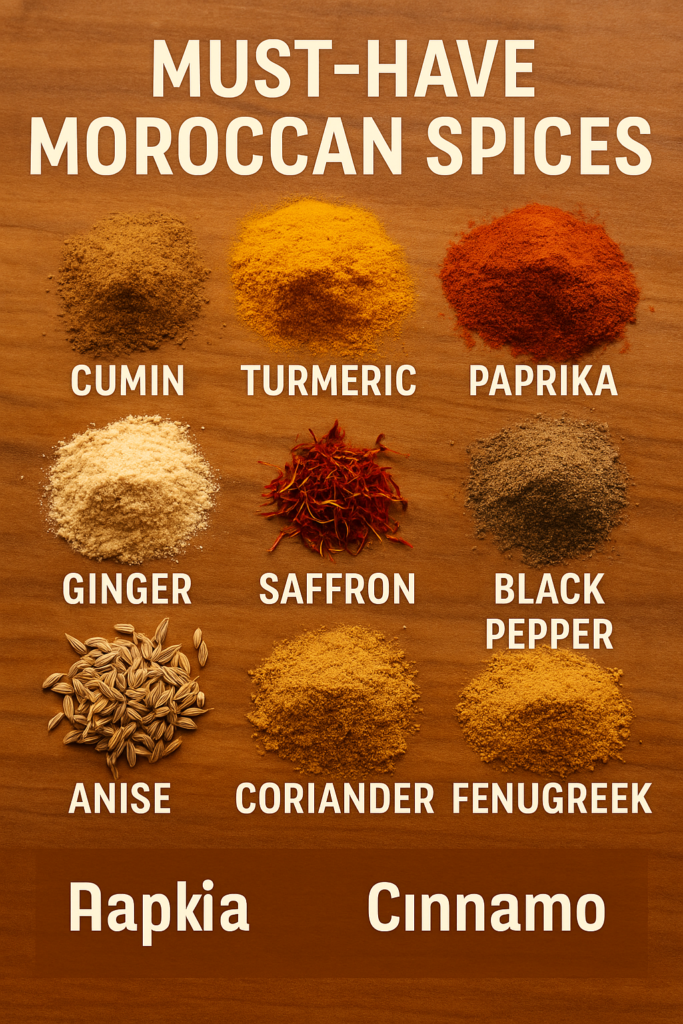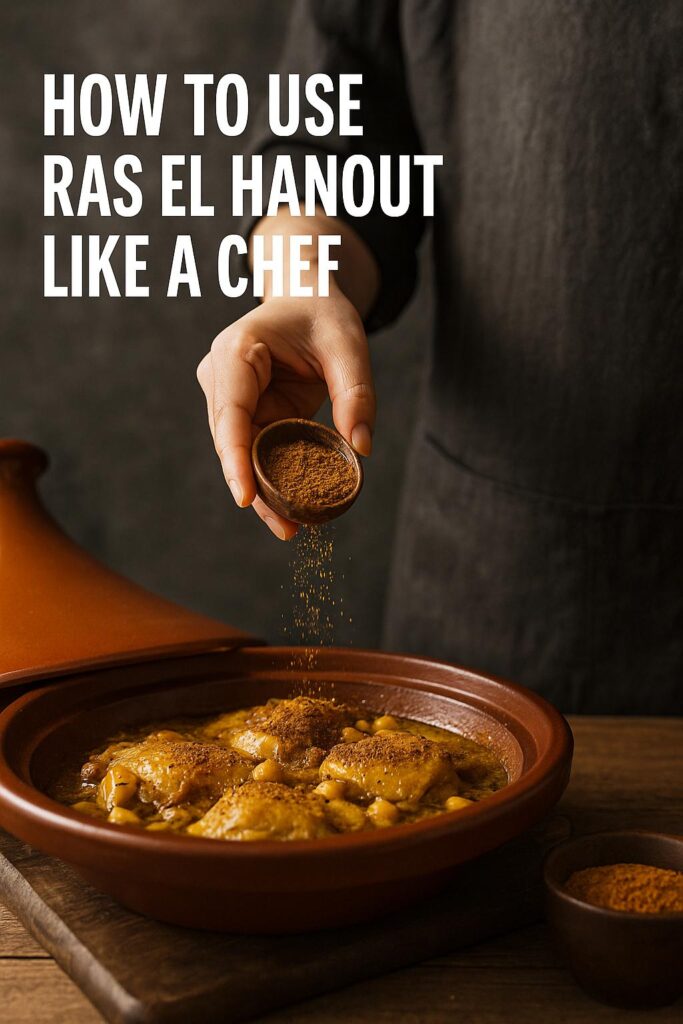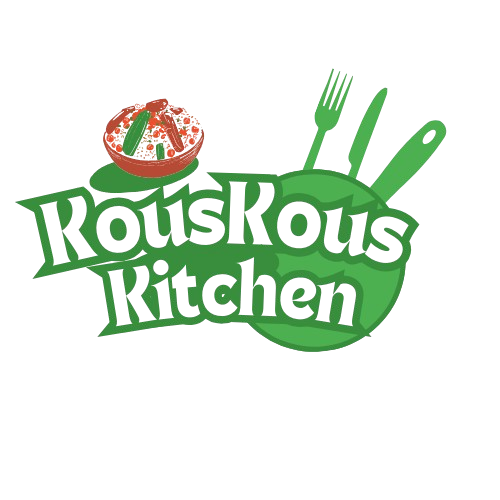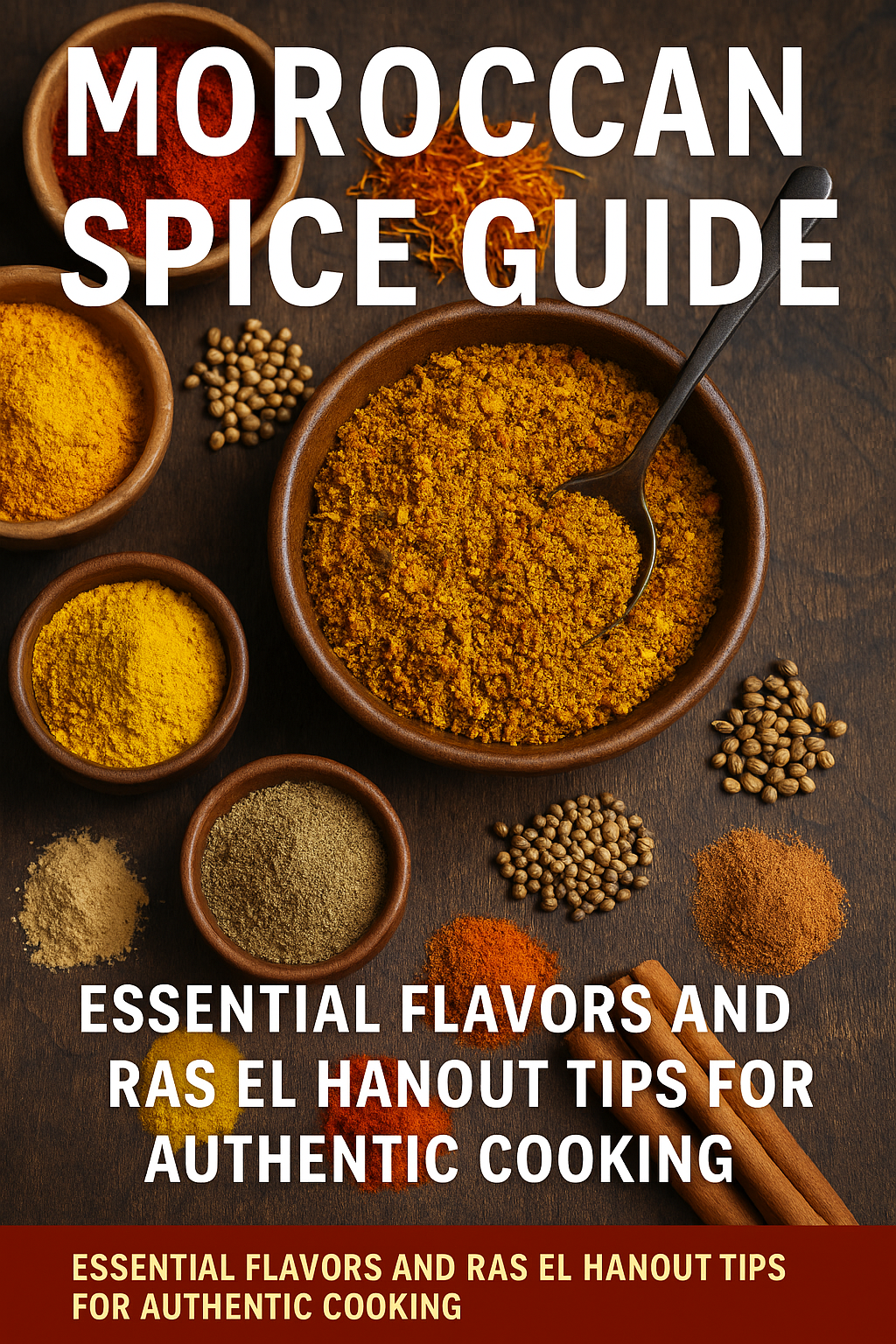Moroccan cuisine is a celebration of aroma, flavor, and warmth. From the bustling souks of Marrakech to quiet kitchens in the Atlas Mountains, spices are at the heart of every dish. This Moroccan spice guide will help you understand the most important spices used in traditional Moroccan cooking, with a special focus on Ras el Hanout, the famous Moroccan spice blend.
Whether you’re preparing your first tagine or exploring new culinary frontiers, these spice insights will transform your kitchen.
Must-Have Moroccan Spices

Cumin
Warm and earthy, cumin is used in nearly every Moroccan dish. It’s a base note for tagines, lentils, and even table seasoning.
Turmeric
Known for its golden color and subtle bitterness, turmeric gives Moroccan chicken and vegetable stews their rich hue.
Paprika
Sweet or hot, paprika adds depth and color to spice rubs for grilled meats and tagines.
Ground Ginger
Used differently than fresh ginger, ground ginger adds a warm spiciness to Moroccan Harira, Bastila, and couscous broths.
Cinnamon
Both sweet and savory, cinnamon is used in meat dishes like lamb tagine with prunes and in desserts like Ghriba cookies.
Saffron
Saffron threads are expensive but crucial for depth in rice dishes and special occasion stews.
Black Pepper
Adds a sharp contrast to sweet spices. It’s frequently combined with ginger and turmeric in chicken-based dishes.
Anise
Used in traditional Moroccan pastries like Ghriba and breads for its mild licorice note.
Coriander
Adds citrusy undertones, often paired with cumin in vegetable tagines.
Fenugreek
Less common, but found in homemade Ras el Hanout blends and used in regional cooking.
Explore how these come together in: How to Make Authentic Moroccan Tagine
Ras el Hanout + Moroccan Heritage: What Is It?
“Ras el Hanout” means “head of the shop,” referring to the best spices a merchant offers. It’s a complex spice blend that can include 10 to 30 ingredients, depending on the vendor or region.
Common components include:
- Cardamom
- Nutmeg
- Cloves
- Cinnamon
- Cumin
- Coriander
- Allspice
- Mace
- Chili pepper
Some Moroccan cooks even include dried rosebuds or lavender in their blends.
It’s often used in couscous dishes, meat rubs, and stews, giving Moroccan recipes their depth and mystery.
Want to try it? Start here: How to Make Authentic Moroccan Couscous
How to Use Ras el Hanout Like a Chef

- For Tagines: Add a teaspoon during the simmering stage to flavor chicken, lamb, or vegetarian tagines.
- For Grilled Meats: Mix with olive oil, garlic, and lemon juice to make a marinade.
- For Couscous: Stir into the broth or sprinkle on top before serving.
Tips:
- Don’t overdo it—start with 1 tsp per pound of meat.
- Use it with salt to balance out its intensity.
- Pair with sweet ingredients like raisins or apricots for depth.
Try this recipe: How to Make Moroccan Harira for Dinner
DIY Ras el Hanout Recipe + Storage Tips
Want to make your own?
Basic Homemade Ras el Hanout (Starter Blend)
- 1 tsp cumin
- 1 tsp ground coriander
- 1 tsp paprika
- 1/2 tsp turmeric
- 1/2 tsp cinnamon
- 1/2 tsp ginger
- 1/4 tsp ground cloves
- 1/4 tsp nutmeg
- Optional: pinch of cayenne or dried rose petals
Instructions:
- Combine all spices in a bowl.
- Grind if needed using a spice grinder.
- Store in an airtight jar for up to 6 months in a cool, dry place.
Fun fact: Fez-style Ras el Hanout includes dried lavender, while Marrakech versions lean toward hotter blends.
Use it in sweet-savory pies: How to Make Moroccan Bastila
Moroccan Spice Hacks + Substitutes
- No Saffron? Use a mix of turmeric and a touch of orange blossom water.
- No Ras el Hanout? Mix cumin, paprika, cinnamon, and ginger as a quick substitute.
- Fresh vs. Ground? Ground is more common in Moroccan cuisine, but fresh garlic or ginger can boost flavor.
- Storage Tip: Keep spices in glass jars away from light to preserve aroma.
Try baking with spices: How to Make Traditional Moroccan Ghriba Cookies
FAQs
Is Ras el Hanout spicy? No, it’s more aromatic than hot. Some blends include chili for mild heat.
Can I use Ras el Hanout in non-Moroccan dishes? Yes! Try it in rice pilaf, roasted vegetables, or lentil soup.
What’s the difference between Ras el Hanout and Garam Masala? Both are blends, but Ras el Hanout has more floral, warm notes and no savory elements like cumin in some Indian versions.
With this Moroccan spice guide, you now have the tools to add authentic flavor to every dish. Start building your pantry, mix your own Ras el Hanout, and bring the warm soul of Morocco into your kitchen.
Looking for full recipes?

